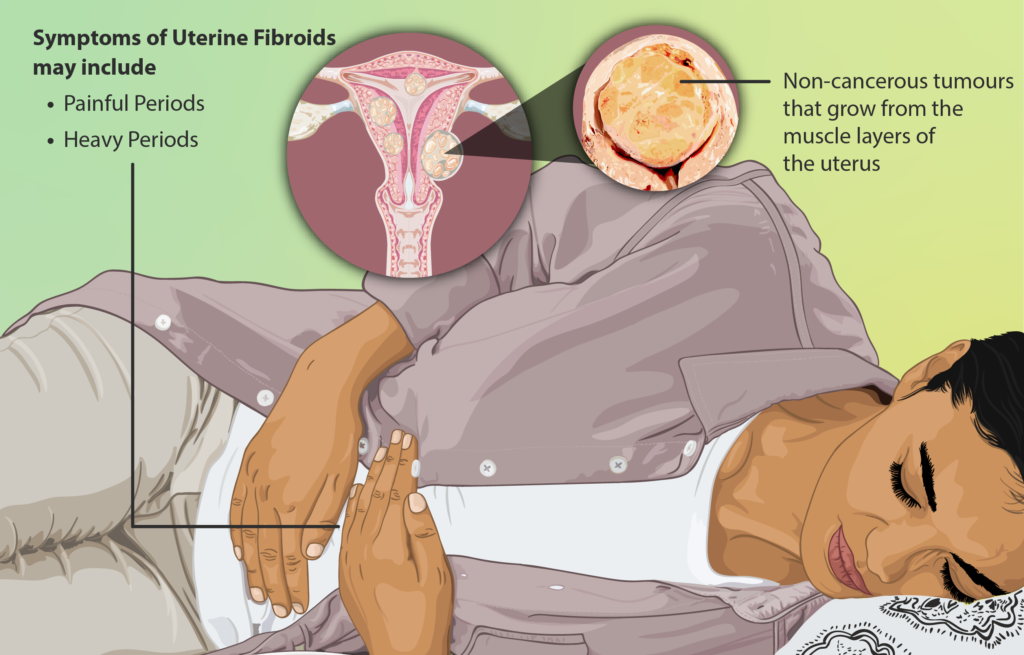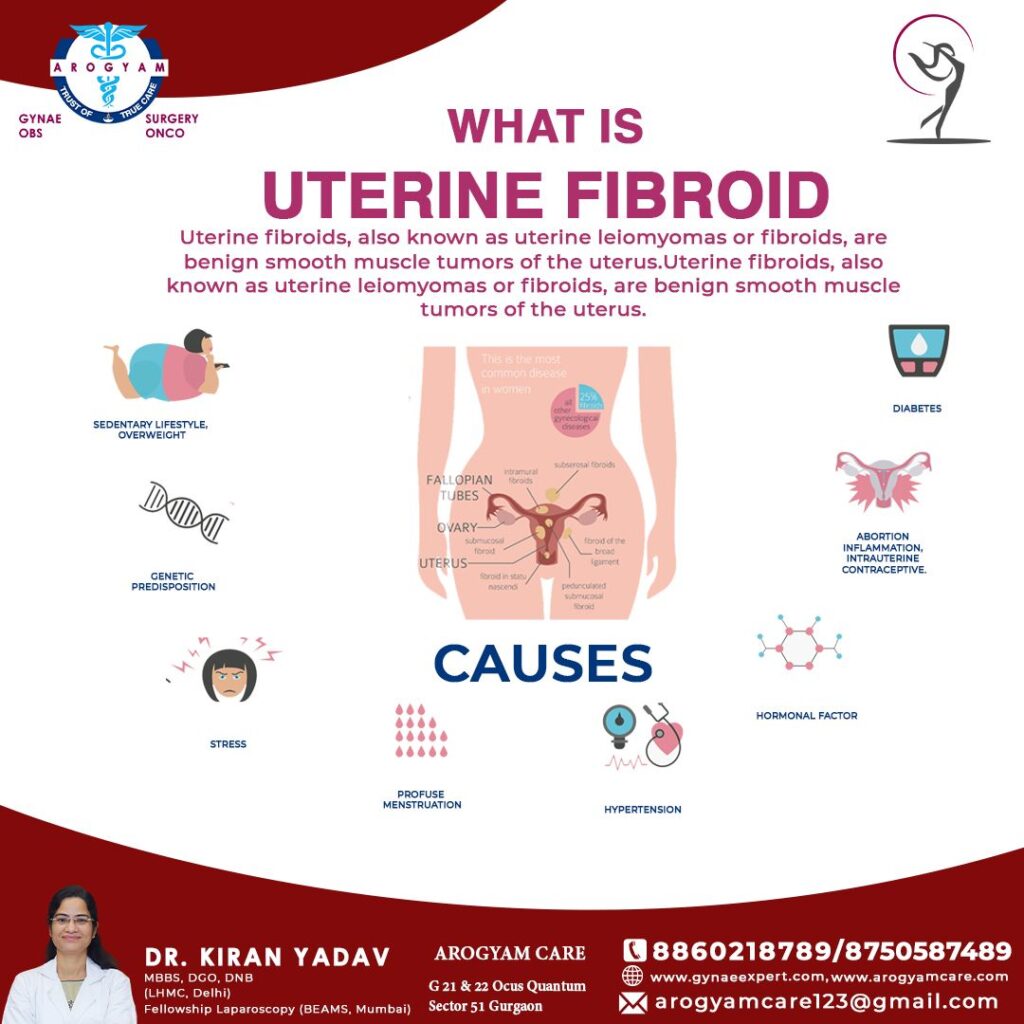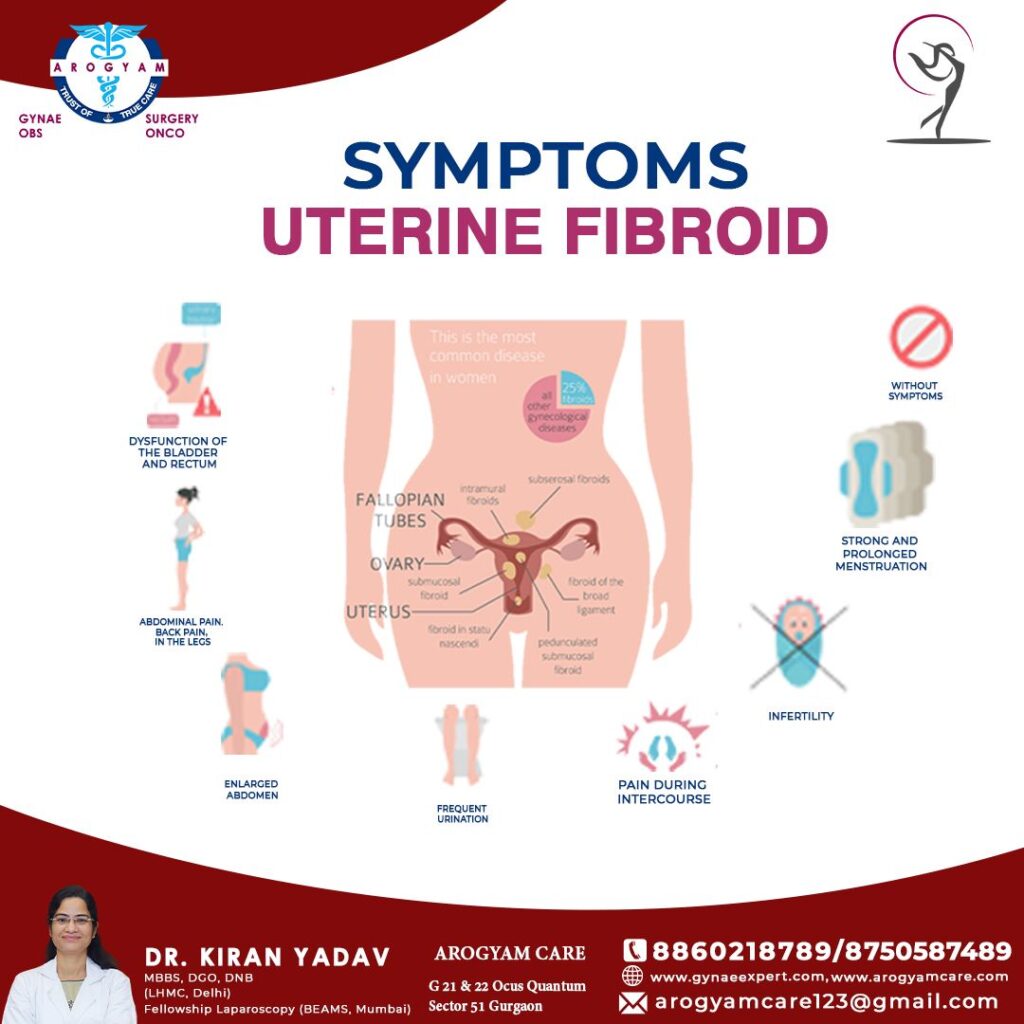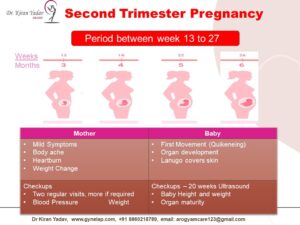Uterine fibroids/ Leiomyomas:
- Do you know that 70-80% of females develop uterine fibroids by age of 50 years.
- Do you also know that uterine fibroid make one fourth of all gyne related problems.
Uterine fibroids are noncancerous growths in the uterus. These fibroids are made up of muscle and fibrous tissue They can vary in size from as small as a pea to larger than a watermelon. They can vary in numbers from single to multiple.

Uterine fibroids in women can occur in different areas of the uterus. They are typically categorized into three types based on their location:
- Subserosal fibroids: These grow on the outer wall of the uterus.
- Intramural fibroids: Found within the muscular layers of the uterine wall.
- Submucosal fibroids: These protrude into the uterine cavity
Apart from uterus they can also occur in cervix as cervical fibroid, broad ligament and fallopian tubes.
Why Uterine fibroids are formed? What are the causes of uterine fibroids?
Considering that 3 out of 4 females can develop fibroid, its natural to have fear that am I at risk ? About half of females in the world have atleast one fibroid by menopause. Let’s understand what causes these fibroids according to gynecologist for uterine fibroid treatment in Gurgaon Delhi NCR?
- Unknown Causes: In vast majority of cases, what causes fibroid in uterus in women remain unknown.
- Hormones: Hormones play a significant role in the development of fibroids. Estrogen and progesterone, the two main female hormones, are key players. These hormones are higher during reproductive years, which is when fibroids are most likely to develop. Estrogen stimulates the growth of the uterine lining during each menstrual cycle. When estrogen levels are high, it can lead to the growth of fibroid tumors. Progesterone, on the other hand, helps regulate menstruation and prepares the uterus for pregnancy. However, an imbalance between these hormones can cause fibroids to grow.
- Genetics: Having a family history increases risk.
- Age Factors: fibroids are most common in women in their 30s and 40s.
- Obesity: Being overweight increases the risk of fibroids. High weight, high BMI are common risk factors.
- Diet Related factors: A diet high in red meat increase the risk of fibroids. High Calory low nutrition food like refined sugars, cold drinks fast foods increase the risk of obesity and thereby fibroid. Apart from fibroid; these dietary factors are causes of many other problems like cardiac and cancer.
- Alcohol also increase chances
On the other hand plant bases diet, fibers, fruits and vegetables are protective.
So dietary choices are your own which you can modify.

Symptoms of uterine fibroid:
- Majority of females have no symptoms related to fibroid.
- When symptoms occur, they can lead to heavy menstrual bleeding. If you find yourself needing to change your pad or tampon every hour, it might be a sign of fibroids.
- Pelvic pain and pressure are also frequent symptoms. Fibroids can cause a feeling of fullness or pressure in the lower abdomen, sometimes leading to severe discomfort.
- Frequent urination or difficulty emptying your bladder can occur when fibroids press against the bladder. This can be particularly bothersome and disrupt daily activities.
- Constipation and bloating are other symptoms. Fibroids can press on the rectum, making bowel movements difficult and uncomfortable.”
- An enlarged abdomen or a noticeable increase in waist size can also be a sign of fibroids. It also happens that initially a women wrongly feel that she is gaining weight but infact size and weight is increasing because of fibroid.
If you’re experiencing any of these symptoms, it’s important to consult with a healthcare provider. Early diagnosis and treatment can significantly improve your quality of life.”
Complications of uterine fibroid
- Firstly, it is important to understand that fibroid are not cancer and they doesn’t increase the risk of cancer.
- Effect on fertility because of location or size. Fibroid inside uterine cavity decreases chances of getting pregnant and also increase chances of abortion.
- May increase risk of complication in pregnancy like miscarriage, more chances of cesarian section or more bleeding than normal. Females with fibroid who wants to become pregnant should have an ultrasound prior to understand size , location and their impact.
Understanding and cause and symptoms of fibroid is first steps to understand this common problem. It is not something to scare of but a problem that should be discussed timely with your doctor.





